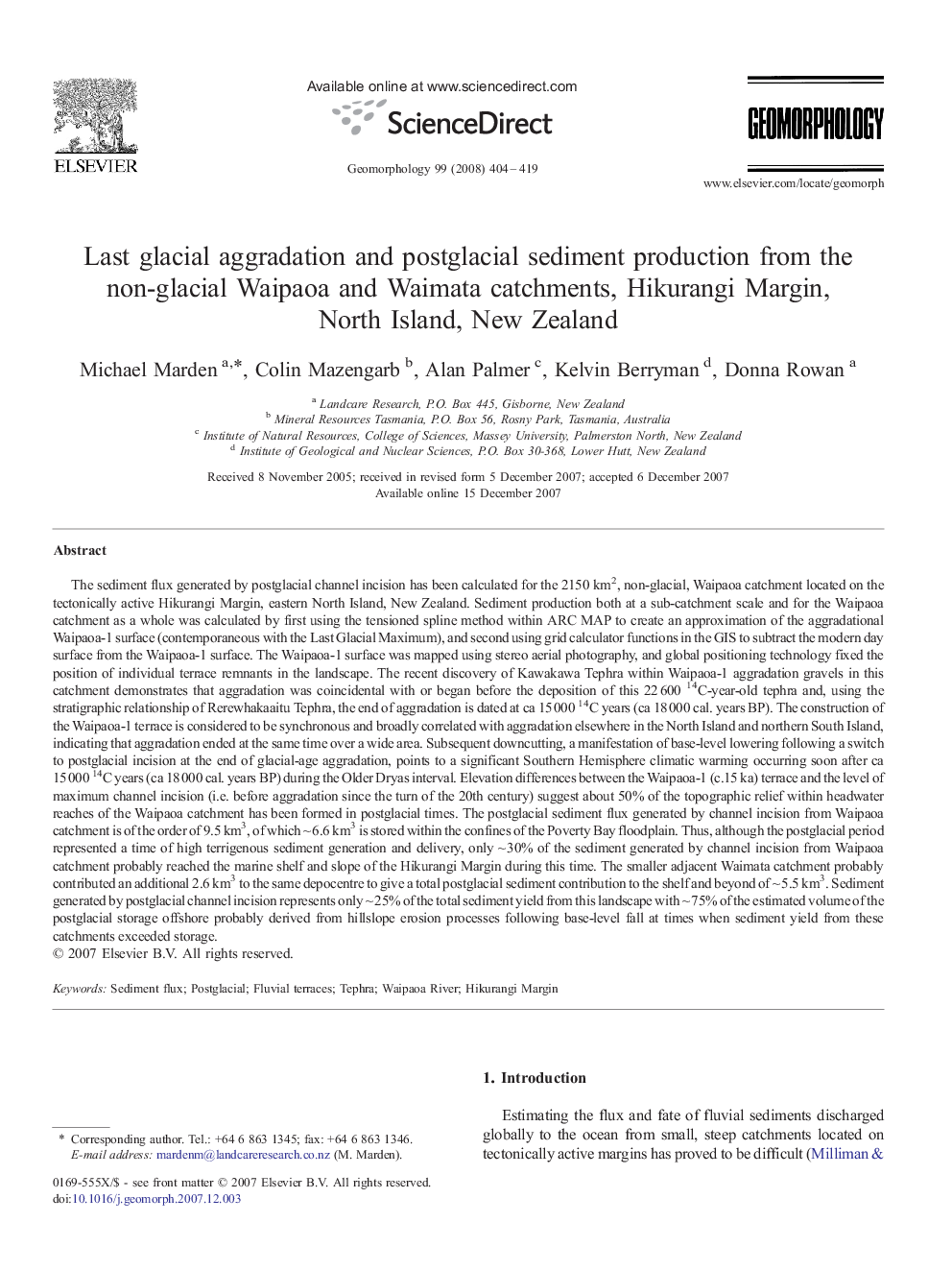| کد مقاله | کد نشریه | سال انتشار | مقاله انگلیسی | نسخه تمام متن |
|---|---|---|---|---|
| 4687076 | 1635555 | 2008 | 16 صفحه PDF | دانلود رایگان |

The sediment flux generated by postglacial channel incision has been calculated for the 2150 km2, non-glacial, Waipaoa catchment located on the tectonically active Hikurangi Margin, eastern North Island, New Zealand. Sediment production both at a sub-catchment scale and for the Waipaoa catchment as a whole was calculated by first using the tensioned spline method within ARC MAP to create an approximation of the aggradational Waipaoa-1 surface (contemporaneous with the Last Glacial Maximum), and second using grid calculator functions in the GIS to subtract the modern day surface from the Waipaoa-1 surface. The Waipaoa-1 surface was mapped using stereo aerial photography, and global positioning technology fixed the position of individual terrace remnants in the landscape. The recent discovery of Kawakawa Tephra within Waipaoa-1 aggradation gravels in this catchment demonstrates that aggradation was coincidental with or began before the deposition of this 22 600 14C-year-old tephra and, using the stratigraphic relationship of Rerewhakaaitu Tephra, the end of aggradation is dated at ca 15 000 14C years (ca 18 000 cal. years BP). The construction of the Waipaoa-1 terrace is considered to be synchronous and broadly correlated with aggradation elsewhere in the North Island and northern South Island, indicating that aggradation ended at the same time over a wide area. Subsequent downcutting, a manifestation of base-level lowering following a switch to postglacial incision at the end of glacial-age aggradation, points to a significant Southern Hemisphere climatic warming occurring soon after ca 15 000 14C years (ca 18 000 cal. years BP) during the Older Dryas interval. Elevation differences between the Waipaoa-1 (c.15 ka) terrace and the level of maximum channel incision (i.e. before aggradation since the turn of the 20th century) suggest about 50% of the topographic relief within headwater reaches of the Waipaoa catchment has been formed in postglacial times. The postglacial sediment flux generated by channel incision from Waipaoa catchment is of the order of 9.5 km3, of which ~ 6.6 km3 is stored within the confines of the Poverty Bay floodplain. Thus, although the postglacial period represented a time of high terrigenous sediment generation and delivery, only ~ 30% of the sediment generated by channel incision from Waipaoa catchment probably reached the marine shelf and slope of the Hikurangi Margin during this time. The smaller adjacent Waimata catchment probably contributed an additional 2.6 km3 to the same depocentre to give a total postglacial sediment contribution to the shelf and beyond of ~ 5.5 km3. Sediment generated by postglacial channel incision represents only ~ 25% of the total sediment yield from this landscape with ~ 75% of the estimated volume of the postglacial storage offshore probably derived from hillslope erosion processes following base-level fall at times when sediment yield from these catchments exceeded storage.
Journal: Geomorphology - Volume 99, Issues 1–4, 1 July 2008, Pages 404–419